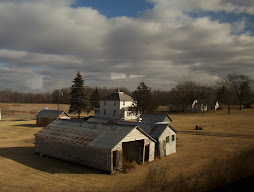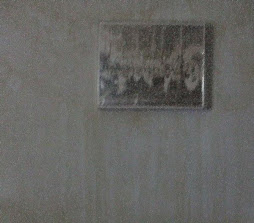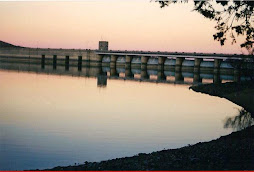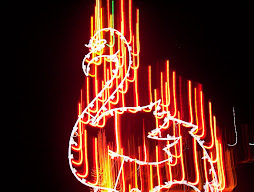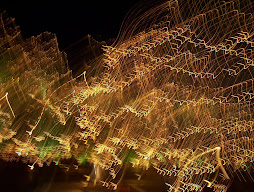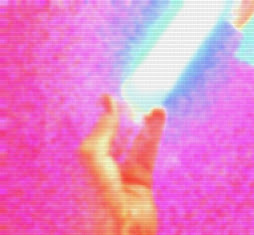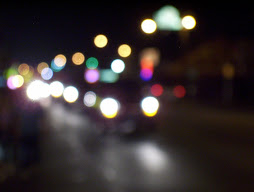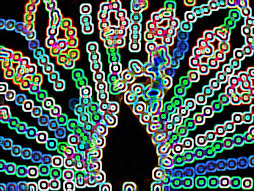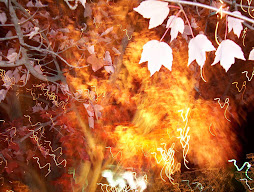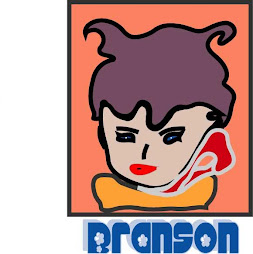skip to main |
skip to sidebar
Japan races to restart reactors’ cooling system
The Tokyo Electric Power Co., which runs the station 140 miles north of here, said it hoped to connect the electric cord to the cooling equipment inside the facility later today in an attempt to stabilize the reactors that were damaged by the powerful earthquake and tsunami that struck Japan eight days ago. They were planning to start with Reactor No. 2, which was seen spewing steam, perhaps containing radioactive particles, on Friday. Engineers apparently think that reactor is better suited to test whether the pumps needed to circulate cooling water will function than other reactors that are more severely damaged.
Officials cautioned that restoring electricity to the reactor would prove fruitless if the pumps were not working. In that case, a new cooling system would be needed, leading to more delays in an emergency that has bedeviled the power company and the government, and caused anxiety and frustration overseas.
Japanese government missteps in response to disasters
One week after an earthquake and tsunami spawned a nuclear crisis, the Japanese government conceded Friday it was slow to respond to the disaster and welcomed ever-growing help from the U.S. in hopes of preventing a complete meltdown at the Fukushima Dai-ichi power plant.
The entire world was on alert, watching for any evidence of dangerous spikes in radioactivity spreading from the six-reactor facility, or that damage to the Japanese economy might send ripple effects around the globe.
As day broke today, steam rose from Unit 3, an unwelcome development if not a new one that signaled continuing problems. Emergency crews faced two continuing challenges at the plant: cooling the nuclear fuel in reactors where energy is generated and cooling the adjacent pools where thousands of used nuclear fuel rods are stored in water.
Turkey sends 33-member rescue team to Japan
The Prime Ministry’s Disaster and Emergency Management Directorate said in a statement on Thursday that Turkey was sending the rescue squad at the request of Japanese authorities. The team, which also includes experts from the Turkish Atomic Energy Agency (TAEK) and the Ministry of Health, were expected to depart for Japan on Friday evening. Three vehicles, two trailers, 40 dosimeters and five sets of radiation measuring equipment are also being sent to Japan.
UR researchers search for new ways to treat radiation exposure
While experts struggle to understand the risks posed by the crippled nuclear reactors in Japan, Jacqueline P. Williams heads up research at University of Rochester on radiation exposure treatments.
Williams, who has a doctorate in radiation biology from the University of London, oversees a $36 million federally funded project at UR that is part of an initiative called the Centers for Medical Countermeasures Against Radiation. Seven American research universities are part of this network funded by the National Institutes of Health.
For almost six years, UR researchers have been involved with this project and are working with a handful of drug companies to better understand the effects of radiation on tissue and to develop drugs to treat exposure.
"If the situation deteriorates further and there really is a full meltdown and breach of all the containers, there will indeed be some long-term risks to people subjected to the fallout. That's where our research would be applicable," she said.
At least somebody's been studying this..
After the week that shook Japan, the nation starts to count the cost
Not surprisingly, the debate has already begun: can this battered nation ever rise again? Japan had, after all, been sliding for two decades before the Pacific tectonic plates shifted with such explosive force last Friday – its economy overtaken by China, its population ageing and its people saddled with the developed world's largest public debt. But this is also a nation that has a remarkable, perhaps unique, history of rebirth after destruction on a biblical scale. In 1923, a 7.9-quake and tsunami famously levelled much of Yokohama and Tokyo, killing at least 100,000 people; the anniversary of the tragedy, 1 September, is now an annual disaster prevention day. Quakes have regularly brought the city to its knees and even the national icon, Mt Fuji, looms threateningly 100km away, always ready to spew ash down on the world's largest metropolis.
Radiation Plume Hits Alaska
For the past week, Unalaska—the most populous island on the Aleutian Chain—has seen jaw-dropping sunrises. The snow-covered ridges have glowed pink and sherbet orange rather than their typical gray, and the unusually pleasant weather has been the most talked-about subject in this fishing town. But the radioactive cloud that could put an end to these sunny days? A close number two.
"What a beautiful morning," wrote resident Laresa Syverson on Facebook this Monday, just as anxiety over the nuclear crisis in Japan was settling in. "The mountains seem to be radiating." That post popped up in my newsfeed between links to a bogus map showing where the fallout from the failing Fukushima Daiichi nuclear power plant was expected. Alaska’s Aleutian Islands were squarely in the red zone.
global markets began to wobble uncontrollably. Billions upon billions of dollars were being hauled out of one market and dumped into others, only to be replaced within hours as conflicting reports and false reassurances served to unnerve already jittery traders.
When the world turned upside down
Stockmarkets took a hammering on Monday and Tuesday. They rebounded on Wednesday, but it was a half-hearted affair and they failed to recover much lost ground. By Thursday, the simmering uncertainty over the extent of Japan's potential nuclear meltdown had traders fearing the worst, and with good reason.
Yesterday, in an emergency telephone hook-up, leaders of the world's seven biggest economies frantically began efforts to cobble together a strategy that would restore some order to gyrating currency markets as the spectre of yet another financial crisis loomed.
..
Had the world's third-biggest economy been in robust financial health and the global financial system ticking over nicely, the disastrous events of the past week - even without the threat of nuclear catastrophe - would have put a serious dent in global growth, at least for the rest of this year.
Athens unwilling to commit forces to military operations but will help with back up
Athens will let NATO forces use military bases in Greece for operations in Libya after the United Nations approved the imposition of a no-fly zone over the North African country, the government appeared to decide on Friday.
Sources said that following a meeting between Foreign Minister Dimitris Droutsas and Defense Minister Evangelos Venizelos and consultation with Prime Minister George Papandreou, it was decided that Greece would not take part in any military operations but would be willing to provide support for humanitarian needs or to help patrol the Mediterranean to ensure arms are not smuggled into Libya.
Greece, however, does appear willing to allow NATO forces to use bases in the country to be used for operations in Libya, where Colonel Muammar Gadhafi’s forces have been pushing back pro-democracy rebels over the past few days before announcing a ceasefire yesterday.
It would be.. Comforting.. To the present government to have NATO forces already in place when the national strikes and riots start up again. And, because it's Greece, they will start back up, again..
Libyan rebels: Gaddafi's forces attacking Benghazi From The Jerusalem Post.
US claims Libyan gov't violating ceasefire; French UN envoy says military intervention may be launched "hours after" upcoming int'l summit; Gaddafi calls UN resolution "blatant colonialism."
..
Large explosions were heard in the eastern Libyan city of Benghazi early on Saturday, and residents said that Libyan leader Muammar Gaddafi's forces were attacking the rebel stronghold.
..
A unilateral ceasefire declared on Friday by the Libyan government appeared to have done little to convince outside powers to hold off on plans for air strikes to force an end to an increasingly bloody civil war.
Other regimes emboldened by Gadhafi's tactics
..But in the end, it was Gadhafi's willingness to use brute force and the tools of his police state that has helped him so far avoid the fate of neighboring autocrats in Tunisia and Egypt who were swallowed up by popular revolutions.
Regimes in Bahrain, Saudi Arabia, Yemen and Syria appear to have taken note, confronting their uprisings with a hard wall of state-sponsored violence.
On Friday, government agents fired on a peaceful protest in Yemen, security forces in Syria reportedly shot several demonstrators dead, and Bahrain's ruling monarchy tore down a 300-foot sculpture at Pearl Square, where protesters had been routed in a deadly confrontation just two days earlier.
Libya shuts air space in face of strikes
Libya shut down its air space on Friday as Britain and France were expected to scramble fighter jets against Moammar Gaddafi's forces after they secured the UN Security Council's blessing.
Eurocontrol, the continent's air traffic agency, said Tripoli "does not accept traffic" until further notice, citing information from Maltese authorities, as France announced air strikes would be imminent.
Gaddafi's son Seif al-Islam said Friday his family was "not afraid" as the Libyan foreign ministry said Tripoli was ready for a ceasefire but wanted to discuss its terms.
Meeting Thursday, the UN Security Council voted by 10-0 to permit "all necessary measures" to establish the no-fly zone, protect civilian areas and impose a ceasefire on Gaddafi's military.
This paragraph is of long(looonng) term interest..
Five countries on the 15-strong council abstained, including permanent members China and Russia, who did not use their veto power. India and Brazil also abstained in addition to Germany.
Brazil
Russia
India
China..
and
Germany.
BRIC plus Germany. This is not a coincidence.
Gadhafi plays deadly war games
Trying to outmaneuver Western military intervention, Moammar Gadhafi's government declared a cease-fire against the rebel uprising faltering against his artillery, tanks and warplanes. The opposition said shells rained down well after the announcement and accused the Libyan leader of lying.
Wary of the cease-fire, Britain and France took the lead in plans to enforce a no-fly zone, sending British warplanes to the Mediterranean and announcing a crisis summit today in Paris with the U.N. and Arab allies. In Washington, President Barack Obama ruled out the use of American ground troops but warned that the U.S., which has an array of naval and air forces in the region, would join in military action.
..
Parts of eastern Libya, where the once-confident rebels this week found their hold slipping, erupted into celebration at the passage of the U.N. resolution. But the timing and consequences of any international military action remained unclear.
Britain, France and NATO held emergency meetings Friday on using military force to enforce the no-fly zone, which was approved by U.N. Security Council on Thursday. Officials announced that the leaders of Britain, France and Germany and the chiefs of the United Nations and Arab League would join other world leaders for the emergency summit on Libya today in Paris.
France's ambassador to the United Nations, Gerard Araud, told BBC Newsnight that he expected military action to begin in Libya within hours of the Paris meeting.
Libya accuses revolutionaries of breaching truce
So far Belgium, Britain, Canada, Denmark, France, Italy, Norway, Qatar, Spain, Sweden and the United States have said they will help to implement the no-fly zone.
French Foreign Minister Alain Juppe said "everything is ready" to intervene in Libya, but he refused to give a timetable.
And:
Some 300,000 people have already fled Libya since the rebellion began and many more are expected to leave if full-blown war breaks out, the agencies said.
EU to back sanctions on Libya oil company next week
The European Union will move to add Libya's National Oil Corp. to its list of sanctions against Muammar Gaddafi's government at a summit on March 24/25, EU diplomats said on Friday.
The move follows Thursday's U.N. Security Council resolution which authorised a no-fly zone over Libya and expanded sanctions against Gaddafi and his inner circle that were first imposed in February. These measures include an order to freeze the assets of the oil company as well as Libya's central bank.
Indict Muammar Gaddafi now for War Crimes in Sierra Leone
With international pressure already mounting on Libyan leader Muammar Gaddafi and with the International Criminal Court now in the process of gathering information on civilian deaths in Libya, the Special Court for Sierra Leone and the International Criminal Court have a profound opportunity to indict Gaddafi for war crimes and crimes against humanity he has committed in Sierra Leone. The United Nations has already sanctioned Gaddafi’s government, and now it’s time his prior crimes in West Africa are brought to justice, too.
Muammar Gaddafi was the mastermind and key financier of the brutal war that left hundreds of thousands dead in Sierra Leone in West Africa in the 1990s. The war would not have happened in the first place had it not been for the desire of the Libyan leader to punish the government of Sierra Leone for what he regarded as its siding with the West in the 1980’s when Gaddafi was at loggerhead with particularly the United States and Britain. It was also part of Gaddafi’s broader agenda including his geopolitical ambition to destabilize much of West Africa and establish satellite states in the region to be headed by puppet regimes that will be doing his biddings. The decade-long war ripped Sierra Leone apart. Thousands of its victims, whose arms and limbs were chopped off by rebels, were reduced to paupers, roaming the streets as beggars in Freetown and other cities. Children as young as a day old were also among those whose arms and limbs were hacked off by Gaddafi’s rebels. Pregnant women, too, were disemboweled with delight in their display of ghastly brutality.
Status of quake-stricken reactors at Fukushima nuclear power plants Full list at link:
The following is the known status as of Friday night of each of the six reactors at the Fukushima Daiichi nuclear power plant and the four reactors at the Fukushima Daini plant, both in Fukushima Prefecture, which were crippled by the magnitude 9.0 earthquake and the ensuing tsunami on March 11.
Reactor No. 1 - Operation suspended after quake, cooling failure, partial melting of core, vapor vented, building housing reactor damaged March 12 by hydrogen explosion, roof blown off, seawater being pumped in.
Reactor No. 3 - Operation suspended after quake, cooling failure, partial melting of core feared, vapor vented, seawater being pumped in, building housing reactor badly damaged Monday by hydrogen explosion, high-level radiation measured nearby on Tuesday, plume of smoke observed Wednesday and presumed to have come from spent-fuel storage pool, seawater dumped over pool by helicopter on Thursday, water sprayed at it from ground on Thursday and Friday.
Reactor No. 4 - Under maintenance when quake struck, no fuel rods in reactor core, temperature in spent-fuel storage pool reached 84 C on Monday, fire Tuesday possibly caused by hydrogen explosion at pool holding spent fuel rods, fire observed Wednesday at building housing reactor, pool water level feared receding, renewed nuclear chain reaction feared, only frame remains of reactor building roof.
Live Radiation Monitoring from West LA on USTREAM (Video stream)
Japan Raises Nuclear Severity Level (Video)
Full Core Meltdown in Japan? From Rense.com
Possibly it's ongoing and concealed. All along, Japanese and Tokyo Electric (TEPCO) officials downplayed or lied about the severity of the crisis. Virtually nothing they say can be believed.
Nor from the Obama administration, budgeting loan guarantees for new reactor construction instead of decommissioning all 104 nuclear plants because operating them risks full core meltdowns. Partial or full ones gravely harm earth, air, water and food. Three hazardous Fukushima radioactive isotopes are especially problematic. University of Rochester Professor Jacqueline Williams, a radiation expert, says ingesting radioactive iodine-131 causes thyroid and other cancers. So does hazardous beta and gamma radiation from Cesium-137. Released Strontium 90 also causes leukemia and other cancers. Large amounts of all three are spewing daily.
Under a worst case scenario, millions of Japanese, Pacific rim and northern hemisphere people will be harmed, many gravely. Millions of deaths may result. The dangers of nuclear power can't be overstated. Potentially, all planetary life is threatened. What better reason to end all commercial and military use now.
Japan lays power cable in race to stop radiation From Sympatico.
Exhausted engineers attached a power cable to the outside of Japan's tsunami-crippled nuclear station on Saturday in a race to prevent deadly radiation from an accident now rated at least as bad as America's Three Mile Island in 1979.
..
"If they can get those electric pumps on and they can start pushing that water successfully up the core, quite slowly so you don't cause any brittle failure, they should be able to get it under control in the next couple of days," said Laurence Williams, of Britain's University of Central Lancashire.
If not, there is an option of last resort under consideration to bury the sprawling 40-year-old plant in sand and concrete to prevent a catastrophic radiation release.
That method was used to seal huge leakages from the 1986 Chernobyl disaster.
Nuke engineer: Fuel rod fire at Fukushima reactor “would be like Chernobyl on steroids”
We’d be lucky if we only had to worry about the spent fuel rods from a single holding pool. We’re not that lucky. The Fukushima Daiichi plant has seven pools for spent fuel rods. Six of these are (or were) located at the top of six reactor buildings. One “common pool” is at ground level in a separate building. Each “reactor top” pool holds 3450 fuel rod assemblies. The common pool holds 6291 fuel rod assemblies. [The common pool has windows on one wall which were almost certainly destroyed by the tsunami.] Each assembly holds sixty-three fuel rods. This means the Fukushima Daiichi plant may contain over 600,000 spent fuel rods.
So when people say the situation isn't serious, they're either ignorant, in denial, unable to comprehend the enormity of the unfolding situation, or flat out lying to you.
The moment nuclear plant chief WEPT as Japanese finally admit that radiation leak is serious enough to kill people From The Daily Mail..
The boss of the company behind the devastated Japanese nuclear reactor today broke down in tears - as his country finally acknowledged the radiation spewing from the over-heating reactors and fuel rods was enough to kill some citizens.
After Tokyo Electric Power Company Managing Director Akio Komiri cried as he left a conference to brief journalists on the situation at Fukushima, a senior Japanese minister also admitted that the country was overwhelmed by the scale of the tsunami and nuclear crisis.
He said officials should have admitted earlier how serious the radiation leaks were.
Chief Cabinet Secretary Yukio Edano said: 'The unprecedented scale of the earthquake and tsunami that struck Japan, frankly speaking, were among many things that happened that had not been anticipated under our disaster management contingency plans.
'In hindsight, we could have moved a little quicker in assessing the situation and coordinating all that information and provided it faster.'
As "frank" as this "disclosure" is, it's got to be sooo much worse..
‘Anonymous’ puts central banks on notice, demands Bernanke resign Video here, too. Uh Oh.. I'm going to pop some popcorn.. Excerpts:
..But now, one of the group's members has issued a call for perhaps their most audacious campaign yet: civil disobedience against the private central banking system that underpins all the world's industrial economies.
In a little-noticed video published Sunday, one "Anonymous" calls for the dawning of "Operation Empire State Rebellion": a "relentless campaign of peaceful resistance" against organizations that participate in they termed the "control" of large populations through pieces of paper and bits of data.
Japan earthquake: Japan warned over nuclear plants, WikiLeaks cables show From The Telegraph.
Japan was warned more than two years ago by the international nuclear watchdog that its nuclear power plants were not capable of withstanding powerful earthquakes, leaked diplomatic cables reveal.
An official from the International Atomic Energy Agency (IAEA) said in December 2008 that safety rules were out of date and strong earthquakes would pose a "serious problem" for nuclear power stations.
The Japanese government pledged to upgrade safety at all of its nuclear plants, but will now face inevitable questions over whether it did enough.
While it responded to the warnings by building an emergency response centre at the Fukushima plant, it was only designed to withstand magnitude 7.0 tremors. Friday's devastating earthquake was a magnitude 9.0 shock.
In India, Leaked Cable About Bribes Sets Off a Furor
India’s Parliament erupted in outrage on Thursday over a report of an American diplomatic cable that described insiders in the governing Congress Party showing off chests of money and boasting of paying bribes to wavering lawmakers to secure passage of a critical 2008 vote on a landmark civilian nuclear deal between India and the United States.
The revelations, contained in a July 18, 2008, cable obtained by WikiLeaks, portray a large, all-out effort by the Congress Party to win a confidence vote in Parliament that could have toppled the wobbly coalition government and doomed the nuclear deal. According to the cable, written five days before the critical vote, a political assistant to an influential Congress Party lawmaker told a United States Embassy diplomat that one small regional political party had already been paid millions of dollars in bribes for support.
The aide also “showed the Embassy employee two chests containing cash and said that around Rupees 50-60 crore (about $25 million) was lying around the house for use as pay-offs,” according to the cable. Another Congress Party member told an American diplomat that Kamal Nath, a government minister, “is also helping to spread the largesse” and was offering jet airplanes as enticements.
I think the good people of India would like a word with you and your associates, sir..
WikiLeaks founder was warned of CIA “dirty tricks” campaign
According to the article, “Sources within WikiLeaks have told The Age that an Australian intelligence official privately warned WikiLeaks on August 11 last year that Assange was the subject of inquiries by the Australian Security Intelligence Organisation, and that information relating to him and others associated with WikiLeaks had been provided to the US in response to requests through intelligence liaison channels.”
The Australian intelligence official “specifically warned that Assange could be at the risk of ‘dirty tricks’ from the US intelligence community, including the possibility of sexual entrapment,” the newspaper said.
Hacker group says BofA tried to hide loan information
..The data released by Anonymous appear to contain internal e-mails from Balboa Insurance, which was acquired by Bank of America in 2008 when it purchased Countrywide Financial. In the correspondence, the employees discuss changing loan numbers and maybe even deleting them in their records. In one exchange, an employee said the changes may raise “huge red flags” for auditors. “It just doesn't seem right to me,” the employee allegedly wrote.
Anonymous claims that the changes were tantamount to “knowingly hiding foreclosure information from federal auditors.” (I hope they can do better than that.. Not that it's not legal, it's not outrageous enough for the public to demand action. And that's why I don't think these are the main event.. By any stretch..)
And:
WikiLeaks' Julian Assange has repeatedly promised to release documents in early 2011 that “could take down a bank or two” and that the documents will show “flagrant violations” and “unethical practices” at the executive level. Assange has not identified the banks in question but has said in a media interview that he is “sitting on 5GB from Bank of America, one of the executive's hard drives.”
Nuclear crisis: Inside Fukushima's exclusion zone. From BBC.
The video is horrible: You are looking at soon to be dead people. No one's coming for them, and they know it. For these people, it will be at once a quiet, reflective, gray, inevitable, angry, numbed, and yet, at times, a beautiful and poignant passing. But what's left of the streets will remain quiet, as they are now, as they will be when the last one goes.. Each individual, microcosm, and town shuts down at roughly the same time. Recent and terrible events have shocked them into quiet. Ultimately, the radiation will still them.
These people are the tragedy of "not with a bang; but a whimper.."
Physicist: "What They Are Doing Is Basically Using Squirt Guns Against a Raging Forest Fire" ... Japanese Should Use the Chernobyl Approach Instead From awesome sauce Washington's Blog..
It's not effective, because the workers cannot get close enough to put water here. That's why I would personally advocate the Chernobyl option. Do what Gorbachev did, call out the Japanese air force, get the army to bring a fleet of helicopters armed with sand, boric acid and concrete, entomb it, bury it in concrete.
Japan nuclear plant: exposed to the elements - nuclear fuel in meltdown
Open to the elements after its walls were blown away, this is the dried-up storage pool where overheating fuel rods are threatening a nuclear meltdown at Japan's stricken Fukushima power plant.
Close-up pictures of the devastated No 4 reactor building show the gaping hole through which radiation is escaping into the atmosphere as the rods break down.
..
A week after the Fukushima Daiichi plant was crippled by the earthquake and tsunami, the International Atomic Energy Agency (IAEA) said the situation remained "very serious". Graham Andrew, the scientific and technical adviser at the UN safety body, said there had been "no significant worsening" of the situation, but the No 4 unit remained "a major safety concern".
And:
Photographs taken from an aircraft by an employee of the company which owns the power station showed for the first time the full extent of the damage to the reactor units, three of which suffered explosions following a failure of its cooling system.
In unit No 4, a whole wall is missing from the area where spent fuel rods are stored while they cool to a safe temperature.
Inside the building, a green-painted crane, which is normally used to move the fuel rods, caught the daylight flooding into the hall.
Beneath the crane, just out of shot, is the pool holding the fuel rods, which should contain water 45ft deep but which has now boiled dry.
Nuclear Emergency - Fukushima nuclear reactor - JAPAN LIES !!!! 15-03-2011 WE WANT THE This guy shows the media blackout happening in Japan. He did a good job holding his anger, but it's there, and he's correct: The Japanese deserve the truth, whatever that truth is. He asks that you spread his video, so help me spread it, please..
The Ongoing Events at the Fukushima Dai'ichi Nuclear Plant No. 1 Two days old now, so outdated, but a great background for understanding how the situation has grown and mutated.
VIDEO: TEPCO Releases New Aerial Footage of Crippled Fukushima Daiichi Nuclear Reactors From Bradblog.
New aerial footage released by Tokyo Electric Power Co. (TEPCO) today details even more of the extensive damage to numerous reactors at the Fukushima Daiichi nuclear power plant following explosions at reactor Units 1 through 4 which occurred in the days following last weekend's record earthquake and tsunami.
Radioactivity found in airline passengers landing in U.S. From The Examiner.
The New York Post reports that passengers who deplaned flights that had originated in Tokyo triggered radiation detectors in two major U.S. airports.
The flights, which arrived yesterday in Dallas and Chicago, both had passengers who showed low levels of radiation. This was detected when the individuals passed through customs.
Swedish Government: Radiation To Cover Entire Northern Hemisphere From Prison Planet. Found it on Before it's News..
Suggesting that levels of radiation leaks from the stricken Fukushima plant are being grossly under reported by Japanese authorities, a Swedish government agency told Reuters today that not only will the radiation reach North America, but it will subsequently cover the entire northern hemisphere.
..
“Stressing that the levels were not dangerous for people, he predicted the particles would continue across the Atlantic and eventually also reach Europe.”
..
Experts are correct in assuming that the initial waves of radiation will be low, but expect levels to rise in subsequent days as the effects of the three blasts to impact the Fukushima facility, which occurred on Saturday, Monday and Tuesday, manifest themselves in the form of increased radiation injected into the atmosphere.
Radiation Spread Seen; Frantic Repairs Go On From The New York Times.
The first readings from American data-collection flights over the stricken Fukushima Daiichi nuclear plant in northeastern Japan show that the worst contamination has not spread beyond the 19-mile range of highest concern established by Japanese authorities.
But another day of frantic efforts to cool nuclear fuel in the troubled reactors and in the plant’s spent-fuel pools resulted in little or no progress, according to United States government officials.
Japanese officials said that they would continue those efforts — including spraying one of the reactors with water cannons on Friday afternoon — but that they were also racing to restore electric power to the site to get equipment going again, leaving open the question of why that effort did not begin days ago, at the first signs that the critical backup cooling systems for the reactors had failed.
Roboroaches: Students Prepare to Control Roaches With Remote-Control Brains
Here's something a little more interesting than the same, tired frog-and-worm dissections for your high school science class: an electric backpack that you can jam into a cockroach brain to turn the bug into a kind of organic/cybernetic remote-controlled car.
That's the idea behind Roboroach, a product being developed by Backyard Brains, a company trying to find new and inexpensive ways to get practical neuroscience equipment into high school classrooms.
..
By looking at what electrical impulses can do in a cockroach brain, co-founder Greg Gage hopes he can show the next generation of neuroscientists what the brain is made of before they ever get to college.
The device takes advantage of a natural instinct in cockroaches: When one of their long antennae hit a wall, they naturally turn in that direction to run along the wall. The rig triggers those same neurons via remote control, allowing students to trick the roaches into making left and right turns.
The technology is one of the simplest applications of brain stimulation -- a much more complicated example could be cochlear implants, which stimulate the brain into thinking that the ears are hearing things. The technology to steer cockroaches has existed for years, but early ideas for uses, like finding earthquake survivors in rubble with camera-equipped roaches, were limited by the amount of time the device would work. But it still makes for an impressive classroom demonstration.
It's really sad our technological / philosophical outlook has never been oriented towards Service To Other. Imagine where our planet could be now if the great majority of technological advances came through the desire to further humanity, rather than compete with, dominate, or profit from it. While I'm not necessarily sold on the human/computer hybrid that is the current direction science seems to be heading, I do like the creativity used to introduce some sophisticated and engaging demonstrations for groups of intellectually impressionable minds. With Education in decline to shambles, it's a losing battle, but I'm glad there are people who still try, and those who try well.
Scientists Project Path of Radiation Plume
A United Nations forecast of the possible movement of the radioactive plume coming from crippled Japanese reactors shows it churning across the Pacific, and touching the Aleutian Islands on Thursday before hitting Southern California late Friday.
Health and nuclear experts emphasize that radiation in the plume will be diluted as it travels and, at worst, would have extremely minor health consequences in the United States, even if hints of it are ultimately detectable. In a similar way, radiation from the Chernobyl disaster in 1986 spread around the globe and reached the West Coast of the United States in 10 days, its levels measurable but minuscule.
The projection, by the Comprehensive Test Ban Treaty Organization, an arm of the United Nations in Vienna, gives no information about actual radiation levels but only shows how a radioactive plume would probably move and disperse.
It's comforting the U.N. can tell us levels will be "measurable but minuscule," hours, days, weeks, or months before this event's conclusion. More information, less placation would be appreciated.
U.S. radiation experts try to decipher reports from Japan Note: This is a perfect example of a "Privatized Response" to a "Potentially Catastrophic" Event. The myth that all corporations (Or really ANY) can handle disaster response better than a government response Has Got To Stop. I'm not Pro-Government Intrusion (By any stretch), but to what level of shitty, incompetent, negligent, or murderous does a Corporate response have to be before Someone steps in? Is the Japanese government concerned about offending the Company that put potentially ALL of Us in danger? And the Government's response (nothing/lying) is worse. I feel bad for the Japanese. They used to trust their government and found out otherwise, the hard way.. Day 6 coming up, no end in sight, no way to tell what miracle it would take just for this to STOP.
Excerpts:
The Japanese government's radiation report for the country's 47 prefectures Wednesday had a notable omission: Fukushima, ground zero in Japan's nuclear crisis. Measurements from Ibaraki, just south of Fukushima, were also blanked out.
Radiation experts in the USA say that the lack of information about radioactivity released from the smoldering reactors makes it impossible to gauge the current danger, project how bad a potential meltdown might be or calculate how much fallout might reach the USA.
Conflicting accounts of the radiation levels emerged in Tokyo and on Capitol Hill. Japan's Nuclear and Industrial Safety Agency said Wednesday that the radiation detected at the Fukushima plant had fallen steadily over the past 12 hours. But U.S. Nuclear Regulatory Commission (NRC) chief Gregory Jaczko told a House energy subcommittee earlier in the day that radiation levels at the Fukushima plant were "extremely high."
Japan earthquake: US alarm over nuclear crisis From The BBC.
"They are leaving us to die," says the mayor of Minamasoma inside the exclusion zone.
..
Britain has now advised its nationals currently in Tokyo and to the north of the capital to consider leaving the area.
..
On Thursday, army helicopters dumped tonnes of water on reactor three - a day after they were forced to pull out amid concerns over radiation levels in the air above the site.
10,000 people go to get radiation exposure tests in Fukushima Pref.
About 10,000 people headed to evacuation centers and health offices in Fukushima Prefecture on Wednesday to take screening tests for exposure to radiation in the wake of troubles at the Fukushima No. 1 nuclear plant following the massive earthquake, prefectural officials said Thursday.
G-7 to hold emergency talks on Japan quake, economic impact
The Group of Seven advanced economies will hold emergency talks by phone on the massive earthquake in Japan last week and its impact on the economy and financial markets, Japanese Finance Minister Yoshihiko Noda said Thursday.
..
The move comes as the yen briefly strengthened to a postwar record high of 76.25 yen versus the U.S. dollar earlier in the day in Sydney, passing through the previous peak of 79.75 yen reached in 1995. It traded at the lower 79 yen level Thursday afternoon in Tokyo.
Third wave impacts from the Earthquake/Tsunami will begin shortly within the Markets. Speaking of which..
Guest Post: Alert: Nuclear (And Economic) Meltdown In Progress Tyler Durden isn't kidding.
Note: The substance of this alert centers on the unknown aftershocks that may result from the world's third largest economy, Japan, rapidly shifting from an exporter of funding to a consumer of it. In situations like these, we are by definition operating with incomplete and often confusing information, and events are developing more rapidly than they can be fully analyzed and internalized. We regret in advance any mistakes that we might make due to making calls and decisions in this highly fluid environment.
And:
Stage 1: The world watches, riveted, as Japan suffers a tragic and horrible earthquake and tsunami, but as horrifying as these are, they are localized phenomenon affecting a relatively small percentage of the country. The real trouble lurks within damaged nuclear plants, which are now ruined and will never again produce electricity for Japan, creating instant shortages that will take years to remedy. Worse, a dangerous plume of radioactivity is carried south by winds. Tokyo partially empties and shuts down for all practical purposes.
Stage 2: The abrupt slow down of the world's third largest economy alters the smooth flow of cash around the globe, and even causes reversals of some other long-standing flows. Chaotic eddies emerge in a decades-old pattern of ever-increasing flows of money into and out of the money centers, and various carry-trade and other interest-rate-sensitive strategies blow up. Manufacturing in Japan screeches to a halt, disrupting just-in-time manufacturing strategies both internally and across the globe.
Stage 6: Everything changes. Faster than you think.
Thousands flee Tokyo as experts try to calm contamination fears
The stuff of science fiction novels and bad disaster movies has arrived in the world's largest metropolis after radioactivity was detected in Tokyo's city centre yesterday, the possible prelude to a disaster forewarned but never really expected: the meltdown of a nuclear power plant and the showering of fallout over 28 million people.
Experts and government ministers said that the radiation levels in the city were negligible, and that the battle to save the stricken plant in Fukushima was making progress. But they warned that contamination within the danger zone around the plant, about 300km north-east of the capital, was dangerous to human health, and told people inside the zone to evacuate or stay indoors.
No hysterical outbursts, just an endless stream of quiet grief
Given the extraordinary stories that have been told and the amazing images that have been beamed around the world, there was perhaps nothing especially remarkable about the way in which the tsunami struck the port town of Higashi Matsushima, 90 minutes of east of the city of Sendai, epicentre of the earthquake. To the north, the toll of the dead and missing in some towns alone has reached more than 1,000. So if the grief appeared quietly subdued in Higashi Matsushima – a town where at least 320 people have lost their lives and many more remain unaccounted for – it is only because of the scale of this tragedy.
The Corporate Spin begins.. General Electric Defends Nuclear Reactor Design Amid Japan Crisis
*Surprisingly*, from Fox 5, originally from the Wall Street Journal. Excerpts:
General Electric defended the design of a now-stricken reactor it supplied to Japan 40 years ago, saying its containment system was safe and reliable, The Wall Street Journal reported Tuesday.
Fukushima No. 1 plant's reactor No. 1, which experienced a dramatic explosion Saturday, is equipped with a GE boiling water reactor with a so-called Mark 1 containment system. There have been concerns about that particular design for years, with critics saying it is not as robust as later models.
And:
GE dismissed that criticism, in what appeared to be its first comments about equipment it supplied Japan's Tokyo Electric Power Co. (TEPCO).
"The BWR Mark 1 reactor is the industry's workhorse with a proven track record of safety and reliability for more than 40 years," Michael Tetuan, spokesman for GE Hitachi Nuclear Energy, said Monday. "There has never been a breach of a Mark 1 containment system."
Until Now. And there are how many now? Also not the wording "design for years." Also note the 1971 was 40 years ago. Continue on..
Reactors At Heart Of Japanese Nuclear Crisis Raised Concerns As Early As 1972, Memos Show
In the early 1970s, just as a number of reactors were about to be licensed, Stephen Hanauer, a senior member of the Atomic Energy Commission staff, suggested banning "pressure suppression" methods to contain radiation in the event of a meltdown -- methods built into General Electric's Mark I and Mark II containment designs as well as Westinghouse's ice condenser design. The advice was considered and disregarded.
"Steve's idea to ban pressure suppression containment schemes is an attractive one in some ways," Joseph Hendrie, then a deputy director with the AEC, wrote in a Sept. 25, 1972, memo. Hendrie acknowledged that alternative, "dry" containments -- featuring the towers or domes commonly associated with nuclear plants -- had the "notable advantage of brute simplicity in dealing with a primary blowdown, and are thereby free of the perils of bypass leakage."
But regulators ultimately decided that the technology developed by General Electric and Westinghouse was "firmly embedded in the conventional wisdom." Banning it, Hendrie wrote, "would generally create more turmoil than I can stand." His memo was obtained by the Union of Concerned Scientists through a Freedom of Information Act request.
..
Today, three of six GE reactors at the Fukushima Daiichi plant in northeastern Japan are in danger of meltdown after a catastrophic earthquake and tsunami. And 31 aging GE reactors of the same design -- 23 of them with Mark I containment systems and eight of them with Mark II--continue to operate in the U.S., raising concerns among both politicians and scientists. The Mark I containment is rectangular, the Mark II cylindrical. This NRC document explains the two in more detail.
..
NRC Chairman Gregory B. Jaczko told reporters Monday that all U.S. nuclear plants "are designed to withstand significant natural phenomena like earthquakes, tornadoes and tsunamis. We believe we have a very solid and strong regulatory structure in place right now."
..
But industry watchdogs see the fateful decision regulators made almost 40 years ago -- to choose political and economic pragmatism over tougher safety standards -- as endemic in the culture of the NRC as it deals with the prevention of low-probability, high-consequence accidents.
..
They were designed to withstand a pipe break, not a meltdown," he said. It wouldn't take a major earthquake or a tsunami to knock out primary and backup power and push the systems to the breaking point; a hurricane or tornado could suffice.
..
A 1975 report for GE by a team of scientists and engineers found that the company's boiling water reactors were more vulnerable to seismic events than pressurized water reactors -- such as Three Mile Island -- designed by Westinghouse and other firms.
"The PWR [pressurized water reactor] design is inherently more seismic resistant because of lower reactor vessel placement and the need to design for larger LOCA loadings," the report said. LOCA is an acronym that stands for loss of coolant accident -- the type of accident triggered by the earthquake and tsunami in Japan. GE's research team said it would push to make the company's newer reactors more able to withstand earthquake-related stresses.
..
In 1986, former NRC official Harold Denton told a group of utility executives that, according to commission studies, GE Mark I reactors had "something like a 90 percent probability of that containment failing" under accident conditions.
Read the whole article.
Japan suspends work at stricken nuclear plant
Japan ordered emergency workers to withdraw from its stricken nuclear plant Wednesday amid a surge in radiation, temporarily suspending efforts to cool the overheating reactors.
Chief Cabinet Secretary Yukio Edano said the workers, who have been dousing the reactors with seawater in a frantic effort to stabilize their temperatures, had no choice but to pull back from the most dangerous areas.
"The workers cannot carry out even minimal work at the plant now," Edano said, as smoke billowed above the crippled Fukushima Dai-ichi nuclear complex. "Because of the radiation risk we are on standby."
This is happening, and it's rapidly spinning out of control..
Health risks of radiation depend on dose, duration Frequently Asked Questions.
People are stocking up for the long term..
Magnitude 6.0 - NEAR THE EAST COAST OF HONSHU, JAPAN
69 km (42 miles) SSE of Mito, Honshu, Japan
95 km (59 miles) E of TOKYO, Japan
112 km (69 miles) ENE of Yokohama, Honshu, Japan
117 km (72 miles) SE of Utsunomiya, Honshu, Japan
NHK World TV streaming here.
What will spark the next Fukushima?
The gung-ho nuclear industry is in deep shock. Just as it and its cheerleader, the International Atomic Energy Agency, were preparing to mark next month's 25th anniversary of the Chernobyl accident with a series of self-congratulatory statements about the dawning of a safe age of clean atomic power, a series of catastrophic but entirely avoidable accidents take place in not one but three reactors in one of the richest countries of the world. Fukushima is not a rotting old power plant in a failed state manned by half-trained kids, but supposedly one of the safest stations in one of the most safety-conscious countries with the best engineers and technologists in the world.
Chernobyl blew up not because the reactor malfunctioned but because an ill-judged experiment to see how long safety equipment would function during shutdown went too far. So, too, in Japan, it was not the nuclear bits of the station that went wrong but the conventional technology. The pumps did not work because the power supply went down and the back-up support was not there because no one had thought what happened was possible.
Even though Japan had been warned many times that possibly the most dangerous place in the world to site a nuclear power station was on its coast, no one had taken into account the double-whammy effect of a tsunami and an earthquake on conventional technology. It's easy to be wise after the event, but the inquest will surely show that the accident was not caused by an unpredictable natural disaster, but by a series of highly predictable bad calls by human regulators.










































